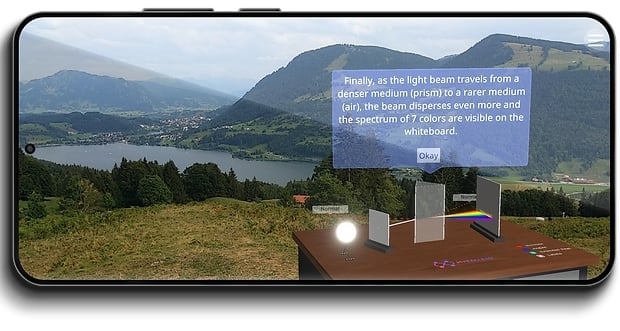
The digital world is expanding all the time. ICT plays a significant role in this. Basic knowledge about programming is becoming more and more important in order to hold your own as a person and an employee in this rapidly developing world and labour market. Programming and coding are gradually being incorporated into teaching methods for primary and secondary schools. Yet, according to Kibet Kipkemoi, the current way of working is not nearly enough. That’s why the former student embedded systems at the University of Twente is designing a train that allows children to learn how to program in a playful way. The train develops along with the child so that he or she can have fun with it from ages four to twelve.
What’s the problem you want to resolve?
“Unfortunately, programming at the moment is either inaccessible or unattractive for a large part of the population. What’s more, the available teaching methods are overly focused on coding and not enough on harnessing the playful nature that each child inherently has. We want our train to give every child the opportunity to learn how to code. The most important thing is that children should have fun playing with it.”
How are you going to do that?
“At LoCoMoGo, we design various products that teach children how to program in a way that they enjoy. Our very first product – the LoCoMoGo train – is built on age-old toys that children have loved for generations. All children respond enthusiastically during the testing process because we approach the learning process from a playful angle. This means that with the train, we can even reach children who at first had no interest in technology or robotics.”
How does the train work?
“Children over the age of four are able to use the LoCoMoGo train. This train runs on every line that is taped onto a floor. That way, children’s creativity is not limited to just a few stretches of track, they can use the train throughout the whole house”.
“The learning experience begins entirely off-screen with the LoCoMotive and the Color Car. The train reacts to the color of the track. For example, it will flash its headlights when it crosses a blue line. On a green line, the train starts to accelerate. This is how children learn the if-then principle. The most important basic principle in programming.”
“As soon as the child is ready for the following step, he or she can get going with the Connectivity Car. This connects the LoCoMoGo train to our educational platform on a tablet or smartphone. The app offers a personalized educational experience. The subject matter always goes a step further whenever the child is ready for it. Children have fully mastered written programming between the ages of 9 and 12. Children learn programming language C with the LoCoMoGo train, which is the mother of programming languages. Once a child has mastered this language, it is easier to learn other languages”.
Why did you get into this?
“At LoCoMoGo, we believe that learning how to code can deliver so much more than just a well-prepared workforce for the future. We endeavour to bring people into contact with each other via the language of coding. Coding has no borders. If my nephews and their friends in Kenya get the chance to learn how to program, they could also work for Google. They can also create new things themselves. That’s what makes it so special. When it comes to programming, everyone speaks the same language.”

How far are you with the development of your start-up?
“The train, as in the locomotive and two wagons, and the app for programming are up and running. We’re launching a Kickstarter campaign on February 25th. People who believe in our product can already buy one. With the money we will produce and deliver the train to our first customers for the Christmas season.”
“If the Kickstarter campaign goes well and business is doing well, we want to launch new wagons. The new wagons are an addition to the train. These are fun to give as a present, for example. Since there are always new elements, the children stay interested in the train for a loner amount of time.”
What can we expect from you in the coming years?
“With LoCoMoGo we want to give all children around the world an opportunity to learn how to program. We initially started with the train, but in future we also want to bring other toys onto the market. All products are based on the same principle: playful learning. My speck on the horizon is that my nephews and their friends in Kenya also get the chance to learn how to code. I think it would be really fantastic if we could contribute to that.”







